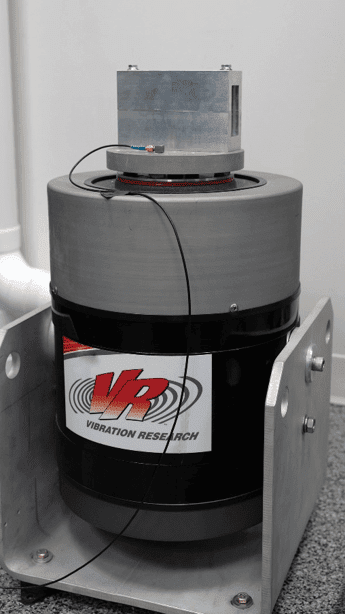Resonance
March 29, 2018
Back to: Sine Testing
Identifying a product’s resonances is one of the primary applications of sine vibration testing. Resonance occurs when the frequency of an external stimulus is the same, or nearly the same, as the product’s natural vibration frequency. When the correlating frequencies interact, it produces a larger response than the natural frequency alone.
We often encounter resonance in daily life. When you run a dampened finger around the rim of a wine glass, you excite its natural vibration frequency. In doing so, the wine glass resonates and emits a sound. When you sing in the shower and the volume noticeably increases for a particular pitch, you may be exciting the natural frequency of something in the bathroom, such as the sink or tub.
Resonance in Vibration Testing
 In vibration testing, the stimulus is an electrodynamic or servo-hydraulic shaker, which vibrates the product according to the test profile. All items have natural vibration frequencies at which they resonate.
In vibration testing, the stimulus is an electrodynamic or servo-hydraulic shaker, which vibrates the product according to the test profile. All items have natural vibration frequencies at which they resonate.
For example, it is important for car manufacturers to test car parts for resonances. If the resonance of an external car mirror is excited on the highway, the mirror will vibrate and make it difficult for the driver to operate the vehicle.
When a product continually vibrates at its resonant frequency, the vibration fatigues the product and eventually leads to damage.
Video Example
At its resonant frequency, a product vibrates with greater acceleration than the input vibration. Consider the following sine vibration test video:
At 0:40 seconds, the shaker is vibrating at a high frequency, and it is difficult to see the movement of the shaker head. As the frequency of the vibration approaches the resonance of the left arm of the three-arm object, the arm vibrates with greater and greater intensity.
If a car mirror performed similarly on the highway, it could be distracting or dangerous.
